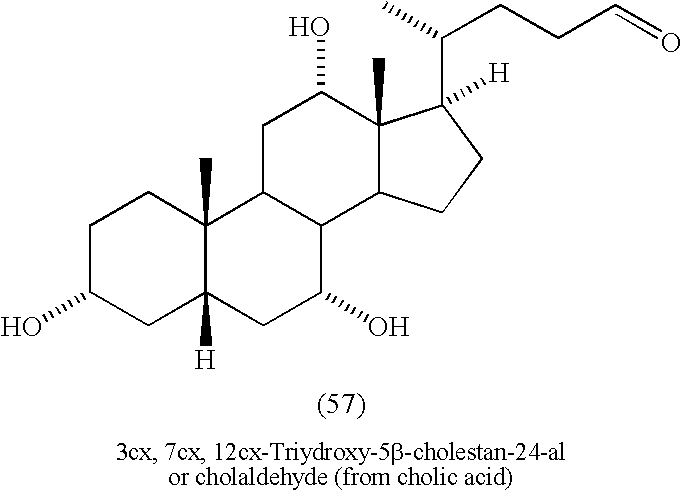Body cavity foams
a foam and body cavity technology, applied in the field of body cavity foams, can solve the problems of increasing the risk of pelvic inflammatory disease (pid), increasing the risk of chlamydial infection, and prepubertal girls and adolescents are particularly vulnerable, and achieves the effects of low preparation, low cost, and simple operation
- Summary
- Abstract
- Description
- Claims
- Application Information
AI Technical Summary
Benefits of technology
Problems solved by technology
Method used
Image
Examples
example 1
General Procedure for Preparing Foam Composition
[0224] Aqueous Phase: At least one polymeric agent and at least one surface-active agent are dissolved in water, with agitation. The solution is warmed to about 50° C. to about 70° C. Water soluble therapeutic active ingredients and optional water soluble ingredients are added with agitation to the Aqueous Phase mixture.
[0225] Oil Phase: At least one hydrophobic organic carrier is heated to same above temperature. Foam adjuvant agent is added to preheated hydrophobic organic carrier. Oil soluble therapeutic active agent or agents and optional oil soluble formulation ingredients are added with agitation to the Hydrophobic Phase mixture.
[0226] The warm Hydrophobic Phase is gradually poured into the warm Aqueous Phase, with agitation, followed by Ultraturax or Silverson homogenization. The mixture is allowed to cool down to ambient temperature. In case of heat sensitive active ingredients, the active ingredient is added with agitation ...
example 2
Emulsion Foam Carrier Composition for Vaginal and Rectal Treatment
[0227] The ingredients listed in the table below are combined to form a foamable emulsion composition.
VersionVersionVersionVersionIngredientNo. 1No. 2No. 3No. 4HydrophobicMCT oil30—1512organic carrierIPM—30—12Foam adjuvantStearyl Alcohol1.01.01.01.0Surface-activeGMS1.01.01.01.0agentPEG S-403333Polysorbate-601111Polymeric agentXanthan Gum0.30.3——Methocel ELV150.40.4——Natrosol——1.51.5Other IngredientsAntioxidant0.20.20.20.2Preservatives1.01.01.01.0Propellant*Propane / butane8.08.08.08.0WaterWaterTo 100To 100To 100To 100Foam SpecificNDNDND0.06gravity (gr / mL)
[0228] The liquefied or gas propellant can be added at a concentration of about 3% to about 25%. The compositions use only non-ionic surface active agents, and the total amount of surface active agent, foam adjuvants and polymeric agent ranged from 1.4 to 2.1% (w / w). The foam of this example is useful as a carrier of active agents, as exemplified in examples below. I...
example 3
Further Mixed Oil Foam Carrier Composition for Vaginal and Rectal Treatment
[0229] The ingredients listed in the table below are combined to form a foamable emulsion composition.
VersionVersionNo. 1 ˜25%No. 2 ˜12.5%IngredientOilOilHydrophobicMineral oil10.25.6organicIsopropyl5.02.5carriermyristateMCT oil7.03.8Foam adjuvantStearyl Alcohol2.02.0agentSurface-activeBrij 722.52.5agentBrij 7211.01.0Cocoa amido0.50.5propyl betainePolymericXanthan Gum0.3—agentNatrosol—0.3Methocel ELV150.5—Propellant*Propane / butane6.06.0WaterWaterTo 100To 100
[0230] The liquefied or gas propellant can be added at a concentration of about 3% to about 25%. The foams of this example have a non-ionic surface active agent to ionic surface active agent ratio (w / w) of 20:1 and 14:1 for versions 1 and 2, respectively. Total amounts of surface active agent foam adjuvant and polymeric agent is in the range of about 1.75 to about 3.5% (w / w).
[0231] The compositions are useful as carriers of active therapeutic active in...
PUM
| Property | Measurement | Unit |
|---|---|---|
| volume | aaaaa | aaaaa |
| volume | aaaaa | aaaaa |
| thickness | aaaaa | aaaaa |
Abstract
Description
Claims
Application Information
 Login to View More
Login to View More - R&D
- Intellectual Property
- Life Sciences
- Materials
- Tech Scout
- Unparalleled Data Quality
- Higher Quality Content
- 60% Fewer Hallucinations
Browse by: Latest US Patents, China's latest patents, Technical Efficacy Thesaurus, Application Domain, Technology Topic, Popular Technical Reports.
© 2025 PatSnap. All rights reserved.Legal|Privacy policy|Modern Slavery Act Transparency Statement|Sitemap|About US| Contact US: help@patsnap.com

